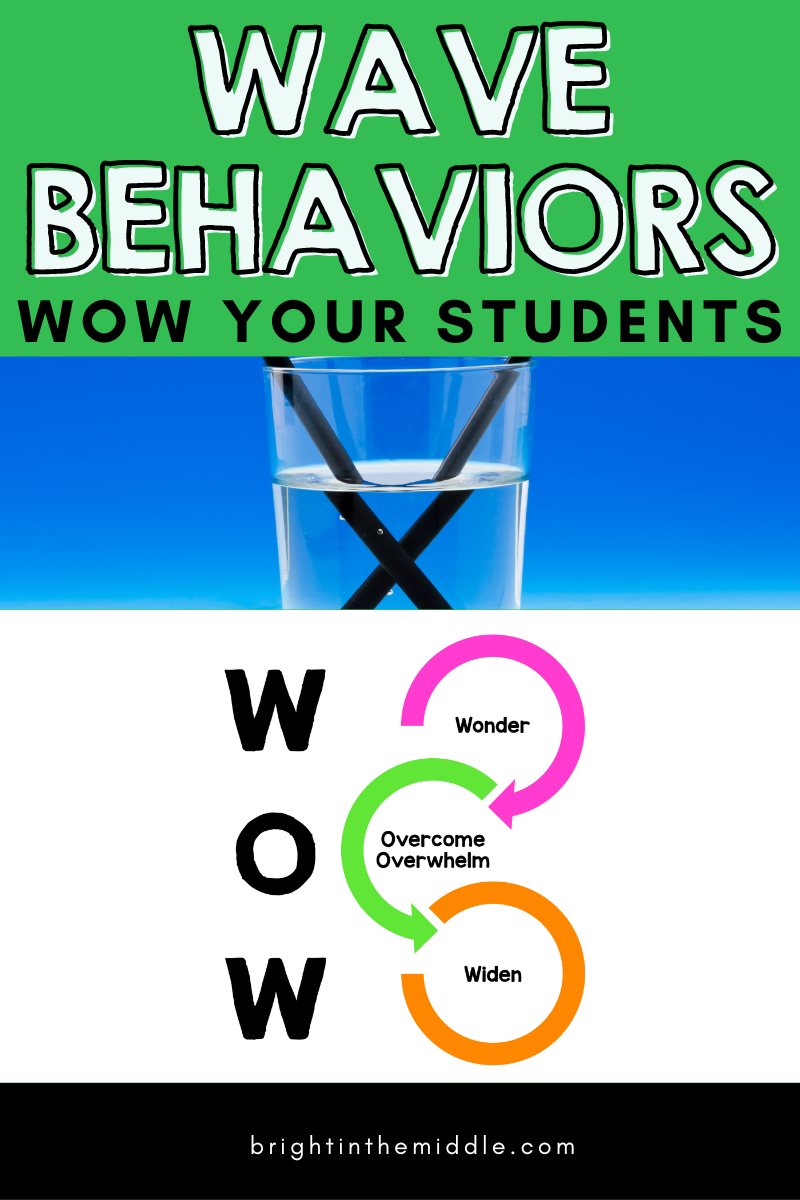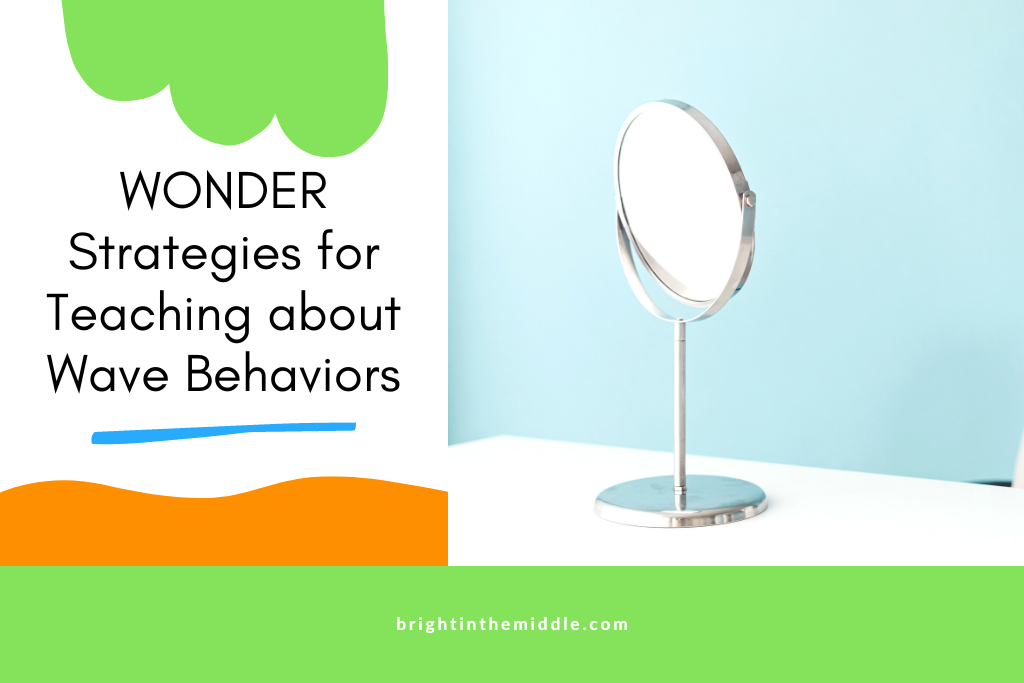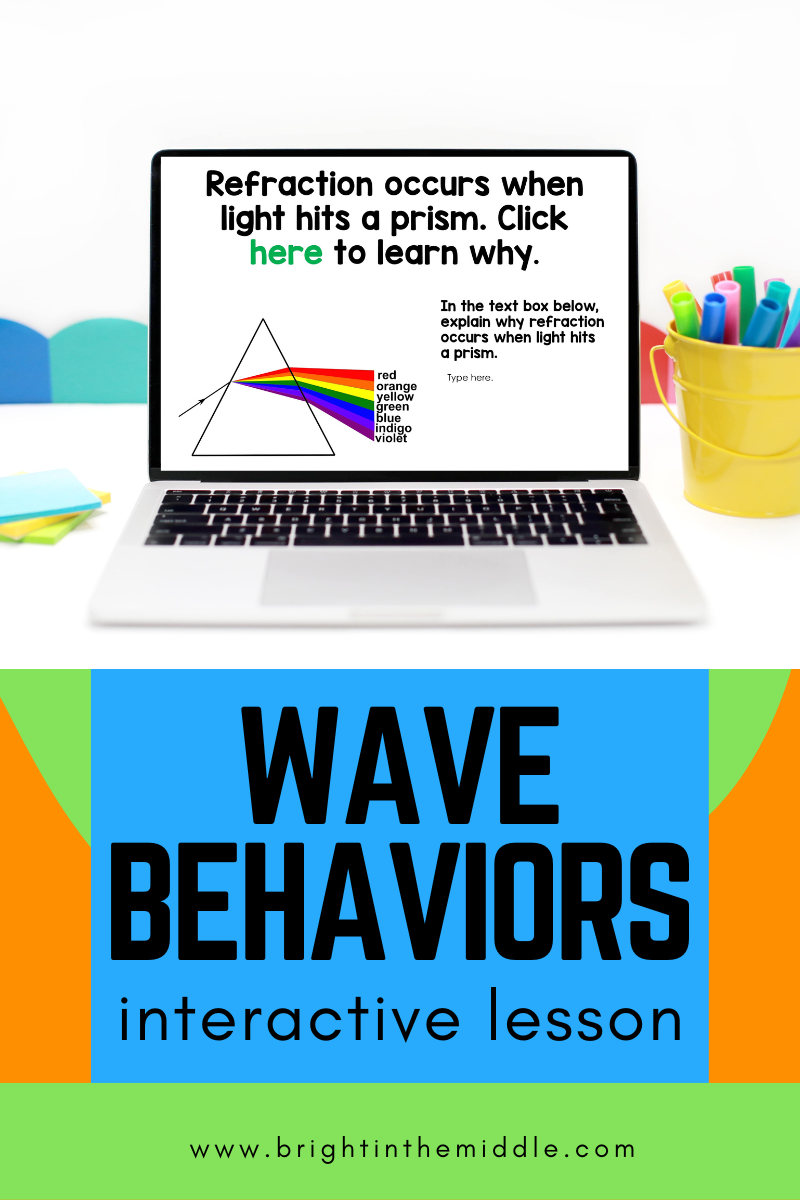Waves are a part of our everyday life. The behavior of waves is so fascinating in itself. You just have to share the awesome behaviors with your students so they can appreciate it!
Why not use the WOW Factor? Let me tell you more!
In this post, I will share WONDER strategies that you can use when teaching the behavior of waves that will engage your students and help them become internally motivated to learn more about the topic. Second, I will share an interactive lesson that will help them to OVERCOME the OVERWHELM of all of the content and vocabulary. Finally, I will share WIDEN activities that you can use in your behavior of waves lesson plan to take their learning beyond the standards.

Behavior of Waves WONDER Strategies
What are WONDER strategies? These are strategies that introduce the concept that you are teaching in an engaging way that will help students become curious and want to learn more! Here are two activities you can try with this lesson. You can choose to do just one, or you can do both!
Wave Post-It Note Activity – Why is the sky blue?
“Why is the sky blue?” is such a popular question! The truth is… it has a lot to do with the behavior of waves! In particular, it involves a wave behavior called scattering. Blue light is scattered in all kinds of directions by the tiny air molecules in the atmosphere.
So, let’s make this question into an activity that students can participate in to get them excited about learning about more wave behaviors.
You’ll need:
- A post-it note for each student
That’s it!
So, what’s next?:
- Give each student a post-it note.
- Ask them to give a brief summary on why they think the sky is blue and write it down.
- Once they are finished, have them take their post-it note and place it on a set space on the board. One of those post-it easel pad papers are also great to post more post-its on!
- Have a student volunteer come to the board and read off a few of the answers.
- See if, as a class, you can find any patterns.
Do they know the answer?
You can take this activity a step further and show this awesome video by Mark Rober!

Wave Behavior Stations
Another WONDER activity that you can do is set up wave behavior stations. At each station, students can explore different examples of wave behavior. This is before they have even learned about them!
You can set up the stations, but don’t tell them the name of the wave behavior they are observing. Have them to make a guess! You can even set a word bank up on the board with reflection, refraction, diffraction, interference, scattering, and absorption and transmission.
Here are the stations that you can set up. How do waves behave?
- Reflection: You will need different mirrors and flashlights. Set the mirrors up at different angles. Have students to shine their flashlights on the mirrors and observe how it reflects at different angles.
- Refraction: You will need a clear plastic container or two, water, and pencils. Fill containers with water, and tell students to submerge the pencil in water to observe what happens (and how it appears to bend at the surface of the water).
- Diffraction: You will need a comb, strainer, and a flashlight. Have students shine the flashlight through the gaps of both the comb and then the strainer. They can observe the patterns that form on the table or the wall.
- Interference: You will need a rope and paper clips. Hang the rope between two points and attach paper clips at consistent intervals along the rope. Tell students to pluck the rope at one of the ends and observe the wave. What patterns are created with the paperclip interference?
- Absorption and Transmission: You will need cardboard, fabric, a sponge, something metal, and something plastic. Once again, you will need a flashlight! Tell students to flash the light on each material and see what happens to that light? Does it “disappear” or does it shine through?
- Scattering: You will need a container with water and either powdered sugar or flour. Also, a flashlight! Fill the container with water and put a little bit of powder sugar or flower inside. Tell students to shine the flashlight through the water and observe what they light does.
As always, you can adjust the stations as needed for your classroom. You can really explore behavior of light waves in this one!
Now that your students are hype about the behavior of waves, it’s time to dive into the lesson!
Wave Behaviors Interactive Lesson
Interactive lessons are a great way to deliver content, whether your students are taking notes independently or you give instructions with guided notes.
Interactive lessons are created to help students reduce student cognitive and actually remember the information they are learning!
They are great for your lessons but also science centers and review as well.

What are some behaviors of waves? This wave behavior interactive lesson covers the ways that waves behave, wave behavior examples, reflection, refraction, diffraction, interference, absorption, transmission, scattering, and more!
There are interactive activities embedded in the lesson to help students process the information. These include drag-and-drop activities, type in the text box questions, matching, and KWL, and more!
This is not your average behavior of waves PPT.
You can find this in the Bright in the Middle Shop.
You can also find this on TPT.
Behavior of Waves WIDEN Activities
At this point, students have learned SO much about wave behavior, but as always, IF there is time (I know how it is), you can widen your students knowledge, and they can learn even more! Here are two WIDEN activities to try with this topic! Skip the behavior of waves worksheet and try these!
Real-World Connection Wave Behaviors Project
How are waves used in the real-world? Let your students find out!
Put your students into groups for this amazing research project. They can research and choose a real-world connection, or you can give them options such as SONAR, ultrasound, radio, music and acoustics, MRI, earthquakes, optics and light in cameras and telescopes, renewable energy, and so much more!
Students can research about their topic using these guiding questions.
- What wave behaviors impact this experience?
- What is the waves behavior in this?
- What technologies are reliant on these wave behaviors?
- What are the advantages and disadvantages of this?
They can present the information in any way that you wish. It can be a slide presentation, a poster, an infographic, a skit, or whatever you choose!
Behavior of Waves RAFT
I sure do love RAFT assignments!
A RAFT is a fun writing assignment where:
- R: role of the author
- A: audience the author is writing to
- F: format the writing piece is in
- T: topic the writing piece is about
Here’s a fun RAFT assignment that your students can do for behavior of waves!
R: Ocean Wave Scientist
A: Students in a Class
F: News Article
T: How does different wave behaviors impact marine life.
Enjoy!
Help your students master science content!



[…] Wave Behaviors […]